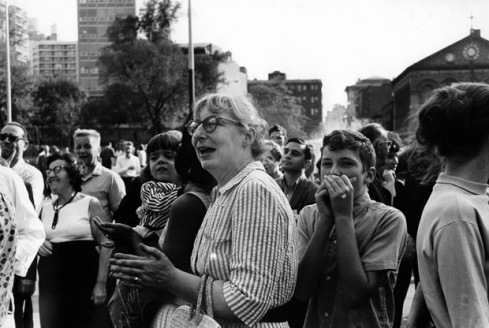 I wrote this short book review for an internal blog at the Housing and Urban Development Agency last summer. It was only a matter of time before I posted it here because it discusses the most seminal text in twentieth century urban development. If you’re dipping your toes into this field, it’s time you encountered Jane Jacobs (and if you’re a seasoned urbanist and you have yet to read her work, get on it!).
I wrote this short book review for an internal blog at the Housing and Urban Development Agency last summer. It was only a matter of time before I posted it here because it discusses the most seminal text in twentieth century urban development. If you’re dipping your toes into this field, it’s time you encountered Jane Jacobs (and if you’re a seasoned urbanist and you have yet to read her work, get on it!).
Jane Jacobs – urbanist, New Yorker, and progressive activist – wrote her book, The Death and Life of Great American Cities, at the dawn of the 1960s. She was responding to a variety of current city planning tactics that advocated, among other things, for strict zoning codes, high-rise housing projects, massive parks, and suburban lifestyles in general. She was also responding to the problems she saw firsthand on the streets of American metropolises – crime, poverty, racism, fear and lack of community. Jacobs’ theories are based on the idea that people thrive when they interact with each other, and that these interactions create a web of safety and prosperity which does not rely on police or fences or government money.
In no less than 450 pages, Jacobs lays out her blueprint for an ideal city. In the first half of the book (and the more compelling half, in my opinion), she explains the basic building blocks necessary for a healthy urban environment, and in the second, she addresses specific concerns like slums, “border vacuums” and government subsidies. Throughout the text, she provides examples from her personal experiences in Back-of-the-Yards Chicago, Boston’s South End, and her home, Greenwich Village, New York City, to name a few places. Jacobs makes an effort to tell specific stories from these neighborhoods, as opposed to relying on statistics, which is one of her complaints about other city planners. Indeed, one of her concluding statements in Death and Life is that we must examine cities, not as scientists who can strategically identify a problem and provide it with a single solution, but as sociologists who listen to communities that already exist and figure out how to assist them individually.
This is perhaps a place where a careless reader might argue that her thesis falls apart, because how can Jacobs at once provide an ideal urban model and at the same time proclaim that every neighborhood is different and thus requires a unique solution? However, if you follow her through to the end of the book (which, I admit, is a long haul), you’ll recognize that her ideas are open-ended and general: Encourage the use of sidewalks. Blend residential and commercial areas for easy and more frequent access. Build public spaces that people will actually use. These concepts have probably occurred to most city-dwellers before. We know that a busy street –no matter the time of night—feels safer than an empty one, and we value the ability to walk to the grocery store rather than drive out to a mall.
Jacob’s observations retain great relevance for urban planning even fifty years later. Moreover, new concerns about carbon emissions, depleted natural resources, and the self-centeredness and social stratification of American society can be addressed through dense, diverse urban living. Suburbanites will not take kindly to Jacob’s words, nor will anyone who prefers a gated lawn and a personal car over a lively city street and a robust public transit system. But, as a city-lover through and through, I found that this book arms me with simple arguments to explain why urban living makes sense and ideas for how to make it better.
photo from tabletmag.com
